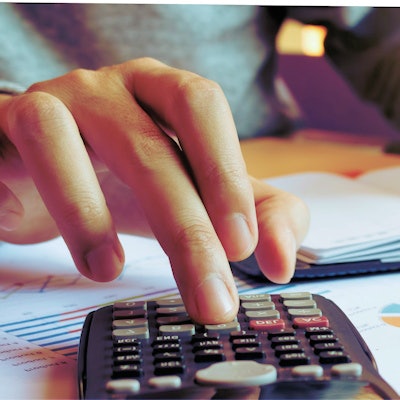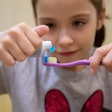
Dentists must pay attention to key performance indicators (KPIs) such as production, overhead, and income, to name a few -- otherwise, they're operating blind, according to dental experts. In addition, they should check the data on a regular basis.
"In the days of past in dentistry where practices generally provided healthy income, dentists didn't have to worry about it as much," said Dr. Roger P. Levin, founder and CEO of the Levin Group dental practice management consultancy. "Today, with a lot of trends and challenges, dentists need to know their numbers so they know their strengths and weaknesses, just like any business."
There are numerous KPIs, but the top six are production, revenue, collections, income, overhead, and cash. Additionally, practices need to pay attention to annual and daily production goals, productivity (doctor production per hour, doctor production per chair, and hygiene production per hour), the number of new patients per month, and the volume of no-shows.
The big 6
"Production is the single most important factor in the entire practice because production generally tells us the efficiency and momentum of the practice," Levin said. Levin Group advises practices to grow by 18% per year for about three years.
"The statement I make repeatedly is that almost every dental practice has a 30% to 50% growth potential in about three years," he added. "We target 18% growth, plus or minus a couple percent, to access that additional 50% that now is really important because there's more competition, more challenges, and lower insurance reimbursement."
 Dr. Roger P. Levin.
Dr. Roger P. Levin.Production indicates how healthy a practice is. What is a healthy practice? When compared with all dental practices, a healthy one is in the top 50% of production with controlled overhead (i.e., expenses aren't too high).
A good target for overhead is 59%, meaning for every $1,000 that comes in, $590 goes toward expenses. Overhead is typically higher (often around 66% for general practices) and that's an indication there's room to reduce expenses, Levin said.
Revenue is what the practice actually takes in considering insurance payments and patient collections. A practice could charge $1,400 for a crown but insurance may only reimburse $900; so, while production is $1,400, revenue is actually $900.
Also, part of revenue is the patient copay and payments stemming from fee-for-service patients. Dental practices want to collect whatever they can, but realistically, there will be some trouble acquiring payment for whatever reason -- sometimes upward of 5% to 6%.
"You need excellent policies to make sure you get paid at the right time," Levin said. "There are practices that collect 99%, but the target is to collect at least 98%."
Income is determined by subtracting overhead from revenue, and this, too, should keep pace with production. If production rises by 18%, income should as well.
Cash is what's in the bank account: How much cash does the practice have on hand to pay bills or cover unforeseen events (like a pandemic)?
When COVID-19 hit, businesses were closed for months, but they still had a certain amount of fixed expenses, which is where cash came in handy.
"If you didn't have any cash reserves, if you didn't have any capital availability for a line of credit ... etc., then how did you pay your bills?" asked Dan Croft, the head of TD Bank's Healthcare Practice Solutions Group since 2014. "You had to use your personal assets."
Fortunately, many dentists didn't have to go that route and instead availed themselves of the Small Business Administration's (SBA) Paycheck Protection Program to cover those fixed expenses.
"Now a lot of CPAs [certified public accountants], advisers, and doctors are thinking about, 'How much should I have around? Should I be keeping two months or three months of cash reserves around to be able to run the business in case of another pandemic or another emergency?' " Croft said.
Have a goal
Both Levin and Croft emphasized the importance of goals. Every practice should have an annual goal -- whether that's to bring in $800,000, $1 million, etc. -- and then formulate a daily goal from that number with the understanding that some days the practice will make more than the daily goal and other days less.
 Dan Croft.
Dan Croft."You have to have [a goal] because if you don't, you don't know how to build a schedule to achieve the annual goal," Levin said. "A lot of practices don't have a goal. They just put patients on a schedule and expect or hope everything to turn out OK, but as dentistry is becoming more businesslike, more competitive, it's more important than ever to strategize the production you'd like to have each day."
From a financial lender standpoint, the expectation is that a dental practice will grow every year, Croft added. Appraisers care about profitability, and growth is one of those factors.
"The profitability of the business drives the value of your business," he said.
Rolled into profitability are not only the KPIs listed above but also productivity, new patients per month, and no-shows. Doctor production per hour, doctor production per chair, and hygiene production per hour demonstrate efficiency and also effectiveness because if those numbers hold steady, the practice is either in a plateau or a decline.
Targets vary based on the practice because a $1 million practice operates differently than a $750,000 practice. However, those numbers should increase, Levin and Croft said.
The same applies for new patients. A good average is 20 to 25 per month, according to Croft. For no-shows, ideally that percentage is less than 1%, but the national average is more like 4% to 5%, according to Levin.
Dentists can check all the KPIs in their practice management software/dashboard and their profit and loss statement. They should check their daily production goal and cash daily; the other KPIs can be checked monthly.
"If a practice wants to improve, then it needs to know where to improve and the numbers tell a story," Levin said. "To me, it's not responsible to run a business without knowing your basic numbers."



















